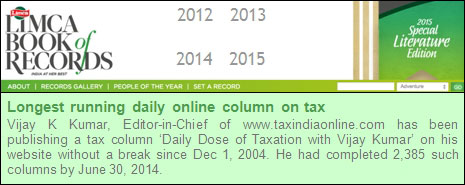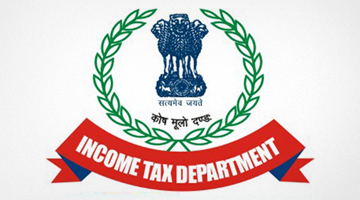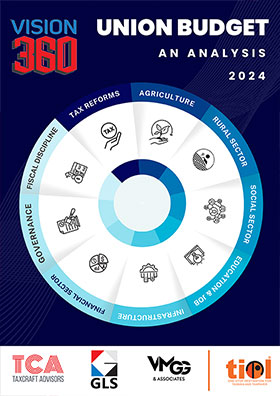CAG Objection and immediate Show Cause Notice
 TIOL-DDT 2822
TIOL-DDT 2822
07 04 2016
Thursday
AG's Audit is one single agency which tax consultants should be ever indebted to. In Central Excise matters, the moment AG's Audit raises an objection, the Department is ready with a Show Cause Notice, even when the objection is silly and against the Law, judgements, Notifications and Board Circulars. Audit can come up with strange objections and they are a law unto themselves and have no respect for the Parliament, Supreme Court and in any case certainly not the Board. They believe that they know more about Central Excise, Customs and Service Tax than the combined wisdom of the Revenue Department, the Legislature and the highest Court in the country!
In Circular No. 5/83-CX.6 (F.No. 210/29/81-CX.6) dated 10-3-1983, CBEC had directed, inter alia, that immediately on receipt of objection from the Accountant General's Audit Party, demand-cum-show-cause-notice should be issued without any loss of time even if the Central Excise Officers do not agree with the Audit's point of view and such demand-cum-show-cause notice may be withdrawn where Department's stand is ultimately accepted by the Accountant General's Office and the objection is settled.
In Circular No. 444/10/99-CX., dated 12-3-1999, Board clarified that that the Assessing Officer should not raise protective demands pursuant to the Audit Objections contrary to the Orders issued by the Board under Section 37B of the Central Excise Act, 1944. Circular No. 5/83-CX.6, dated 10-3-1983 was modified to that extent.
In Circular No. 674/65/2002-CX, dated 1-11-2002, Board clarified that wherever Board's instructions or circulars (whether issued under Section 37B or not) exist on a particular issue, no protective demands should be raised on the basis of CERA objection if the objection is contrary to such Board's instructions or circulars. However, in all such cases, the matter should be immediately referred to PAC section of the Board for resolving the issue with the C&AG of India.
In Circular No. 698/14/2003-CX., dated 3-3-2003, twenty years after the first circular, Board did a volte face and directed "in the meantime, till the time written instructions from the Board for not raising protective demands are received in reply to the reference, the protective demands should be raised/continued to be raised."
But in 2007, CBEC took a bold step and issued a Section 37B order pertaining to Service Tax on GTA and emphatically held, "no demand notice may be issued on the basis of objection raised by the C&AG office, and all pending matters may be decided accordingly." - refer 37B Order No 5/1/2007-ST dated the 12th March, 2007.
Recently, the CBDT in a bold Circular No. 8/2016., Dated: March 17, 2016 directed that:
(i) An Audit objection should be accepted and remedial action should be taken in a case where the audit objection relating to an error of facts or an issue of law is found to be correct.
(ii) Appropriate remedial action should invariably be initiated within two months of the receipt of the Local Audit Report, and necessary orders should be passed within six months thereafter.
(iii) Where the PCIT/ CIT does not accept the Audit objection, he may record his reasons for doing so and inform the AG accordingly within two months from the date of receipt of the LAR. No remedial action needs to be taken in such cases.
Second appeal in cases involving Revenue Audit Objection: The adverse order of the first appellate authority in cases involving revenue audit objections should be carefully scrutinised by the PCIT/ CIT, and appeal should not be preferred if the order is justified either in law or on facts. Reasons for not filing appeal may be recorded by the PCIT/ CIT.
Will we get a similar circular from the CBEC?
Classification of Micronutrients, Fertilizers - CBEC Clarifies
THE issue of classification of micronutrients, multi-micronutrients, plant growth regulators and fertilizers has remained a disputed area in Central Excise. To bring clarity to the issue of classification thereof, it was decided to take opinion of Indian Agricultural Research Institute (IARI) on various issues relating to micronutrients such as - what constitutes micro nutrients, its usage, distinction from plant growth regulator, if any, etc. In light of the opinion received from IARI, Board explains the classification.
Micronutrients are essential nutrients that are required in small quantities for the normal growth and development of plants. As on today, iron (Fe), manganese [Mn), zinc (Zn), copper (Cu), boron (B), molybdenum (Mo), nickel (Ni) and chlorine (Cl) are included in this category. These elements are also called minor or trace elements, but this does not mean that they are less important than macro nutrients.
There is no specific heading in the tariff for classification of micronutrients. However, where the micronutrient is a separate chemically defined compound, it will be classifiable under the heading for that chemically defined compound under chapter 28 or chapter 29. For example, some of the sulphates of micronutrients are specifically covered under CETH 2833.
Vide Notification no. 12/2016 - C.E dated 1.3.2016, Notification no. 12/2012 - C.E dated 17.3.2012 has been amended and a new serial no 109A has been inserted to exempt duty of excise in excess of 6%, payable on micronutrients classifiable under chapter 28, 29 or 38 and covered under serial number 1(f) of Schedule 1, Part (A) of the Fertilizer Control Order, 1985 and manufactured by the manufacturers registered under the Fertilizer Control Order, 1985.
Plant Growth Regulators are defined as organic compounds other than nutrients that affect the physiological processes of growth and development in plants when applied in low concentration. Plant growth regulators are active at low concentrations in promoting, inhibiting or modifying growth and development. They are either natural or synthetic compounds that are applied directly to a target plant to alter its life processes and its structure to improve quality, increase yields, or facilitate harvesting etc. PGR as a substance is specifically covered under CETH 3808. More specifically, Gibberellic acid and Plant Growth regulators are respectively covered under tariff item 38089330 and 3808 9340.
Fertilizers are classified under chapter 31 of the Central Excise Tariff and for this purpose they may inter alia be minerals or chemical fertilizers - nitrogenous (CETH 3102), phosphatic (CETH 3103), potassic (CETH 3104) or fertilizers consisting of two or three of the fertilizing elements namely nitrogen, phosphorous and potassium; other fertilizers (CETH 3105). For the purpose of classification of any product as "other fertilizers", chapter note 6 of Chapter 31 is relevant which provides that the term "other fertilizers" applies only to products of a kind used as fertilizers and contain, as an essential constituent, at least one of the elements nitrogen, phosphorus or potassium.
Mixtures of micronutrients/multi-micronutrients with fertilisers are also manufactured and sold. They shall be classified according to their essential characters and general rules for interpretation of the schedule to the tariff. Where the essential constituent giving character to the mixture is one or more of the three elements namely Nitrogen, Phosphorous or Potassium, the mixture shall be classified under any of the heading of Chapter 31, depending upon its composition.
Past circulars of the Board on the subject namely 79/79/94-CX dt 21-11-94 and 392/25/98 - CX dt 19-5-1998 are rescinded.
Board cautiously concludes, "Classification of Micronutrients, Multimicronutrients, Plant Growth Regulators and Fertilizers shall be governed by the clarification contained in this circular to the extent the product under consideration is covered by the circular."
CIRCULAR NO . 1022/10/2016-CX., Dated: April 6, 2016
FTP - Amendment in General Note No. 15 for Textiles
THE Director General of Foreign Trade has made amendments/additions in the Handbook of Procedures. Vol. 2. 2015-2020 to substitute the General Note No. 15 for Textiles (Product Code: J)
In case of blended fabric +/-3% variation in Count shall be allowed and to that extent, amendments in norms (SION/Ad-hoc) against Advance Authorisation/Duty Free Import Authorisation will not be required.
DGFT Public Notice No. 01/2015-2020., Dated April 06, 2016
Installation of Grid Connected Rooftop Solar panels on CBEC Buildings
ON 5th April, 2016, the Secretary (Coordination),Cabinet Secretariat reviewed the progress of Installation of Grid Connected Rooftop Solar PV panels in Government owned buildings, a project under the 'National Solar Mission' being monitored by PMO.
The Director General, HRD of CBEC has written to all the Chief Commissioners that all the CBEC formations are urgently required to assess the feasibility of installation of Solar Panels on the rooftop of the Government owned buildings or on Government owned land lying vacant. [But this is possible only if the terraces have been got rid of the old and broken chairs, tables, carpets, coolers, flower pots etc. See DDT1211.]
They are required to first assess the technical feasibility of installation of the Solar PV systems required for day-time 'load and depending upon the availability of space (rooftop as well as ground level) thereafter work out the estimated potential of Solar PV required on the basis of Current Annual electricity consumption. This may be done in consultation either with CPWD or the Solar Energy Corporation of India, a Govt. of India enterprise under MNRE.
The Solar panels are to be installed as per the RESCO (Renewable Energy Services Companies) model where these Companies will make the capital investment for installation of the Solar panels on the buildings. The building owner has to sign a Power Purchase Agreement (PP A) with the respective vendor to purchase the green energy at the rates agreed upon, which is likely to be lesser than the power tariff of Discoms. The operation & maintenance of the installations shall remain the responsibility of the private concessionaire for the contract period of25 years.
The DGHRD wants the Chief Commissioners to furnish information such as current annual consumption of electricity, expected solar energy generation, latest by 14th April 2016.
The CBDT has also issued a similar letter to its field.
CBEC DGHRD F.No.910/01/Misc.HRD/SOLAR/2015., Dated April 06, 2016
CBDT ADGIT(Infra) F. No. 186/ADG(Infra)/U-I/Solar energy/2016-17/23., Dated April 06, 2016
Lady ITO in CBI Trap
GUDIVADA is a small town in the Krishna District of Andhra Pradesh. A businessman in this small town was asked a bribe of Rs. 4 lakhs by the local Income Tax Officer to finalise his assessments. He bargained and brought the amount demanded down to 2.5 lakh and the first instalment of Rs. 1.5 lakh was to be paid on Tuesday. The assessee met the lady IRS officer with the 1.5 lakh rupees bribe and actually paid it to her. The only catch was that the assessee had informed the CBI earlier. They followed the assessee and had a prized catch when they caught the ITO red handed with the 1.5 lakh rupees cash. Tomorrow is the Telugu New Year's Day, which our respected ITO will celebrate in prison - away from her family? Was it worth it madam?
Until Tomorrow with more DDT
Have a nice day.
Mail your comments to vijaywrite@tiol.in
















